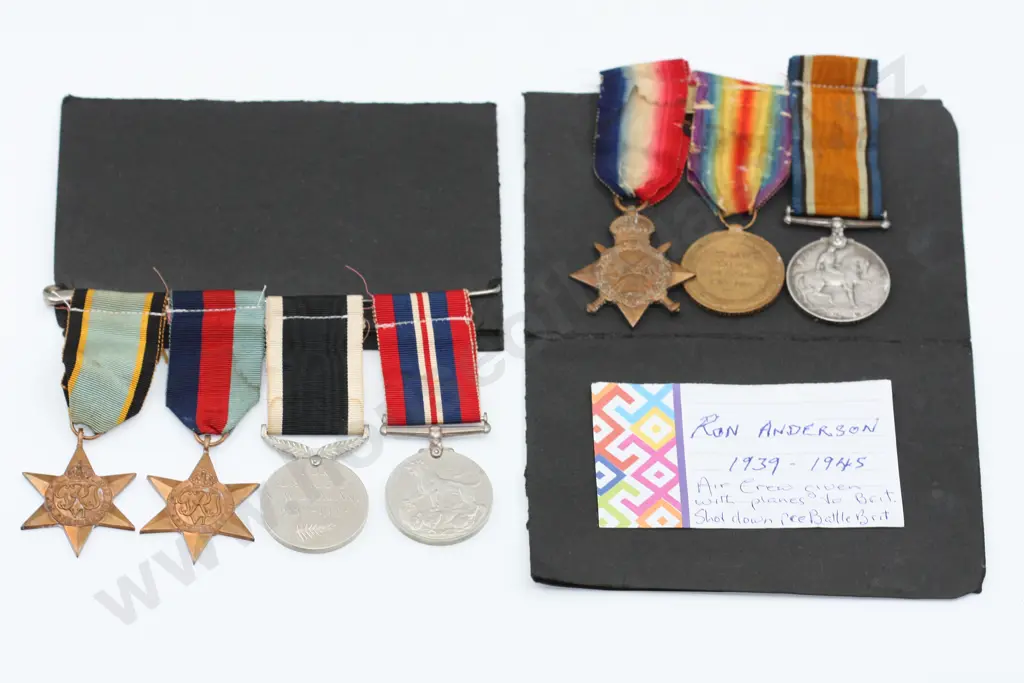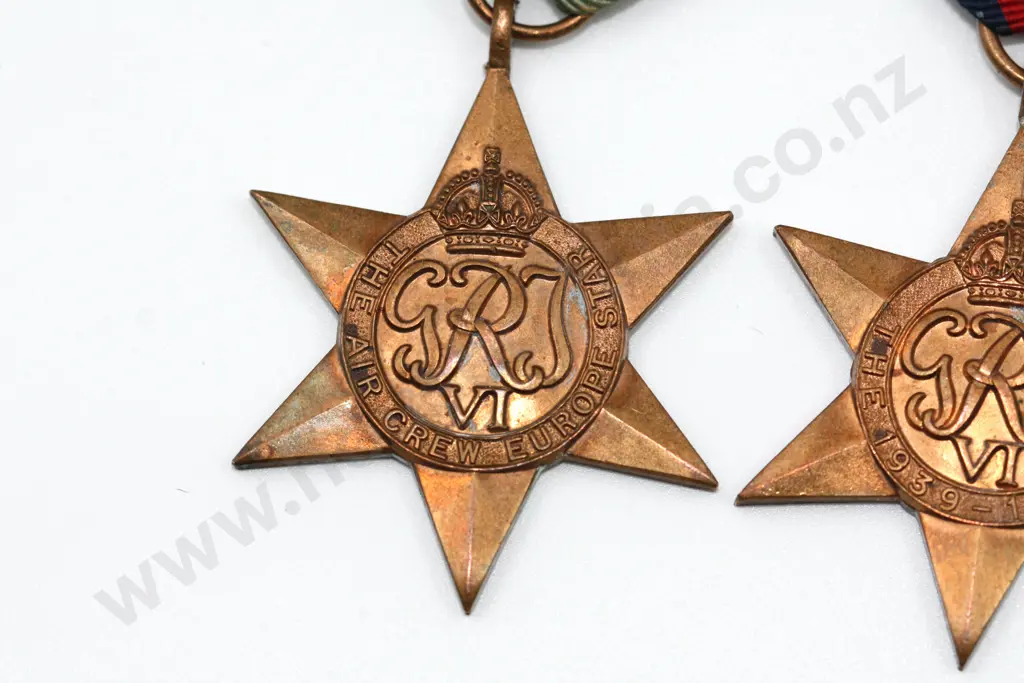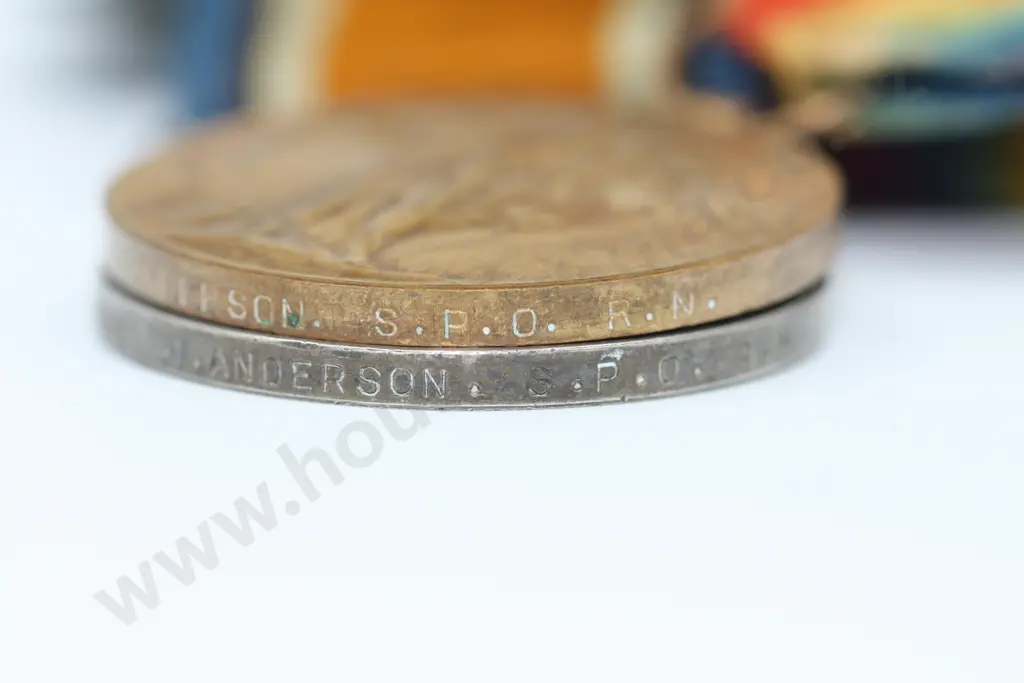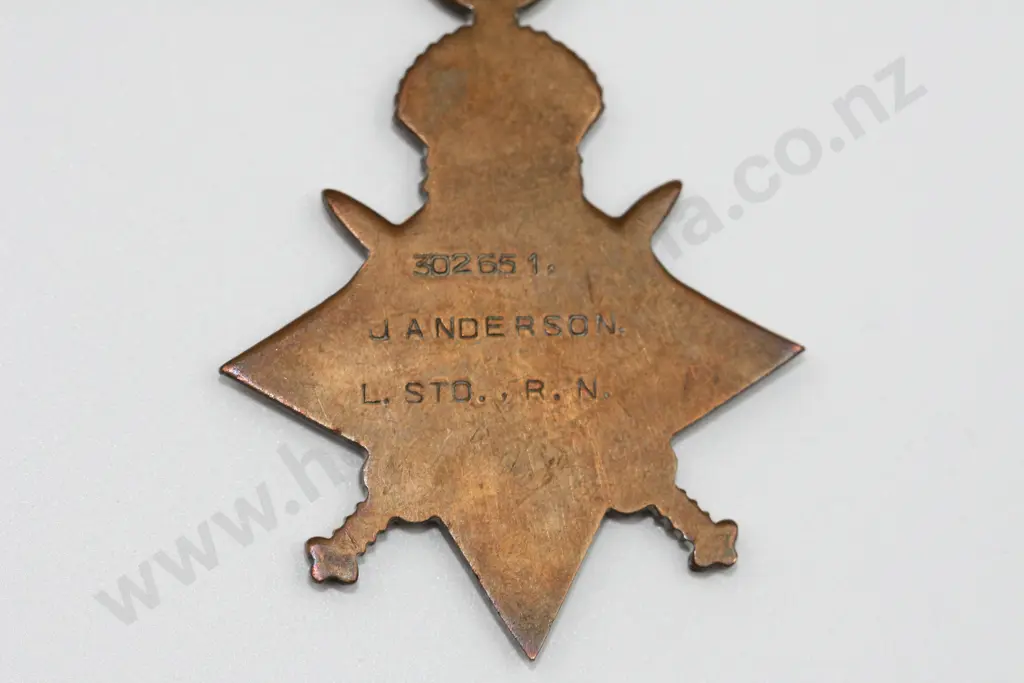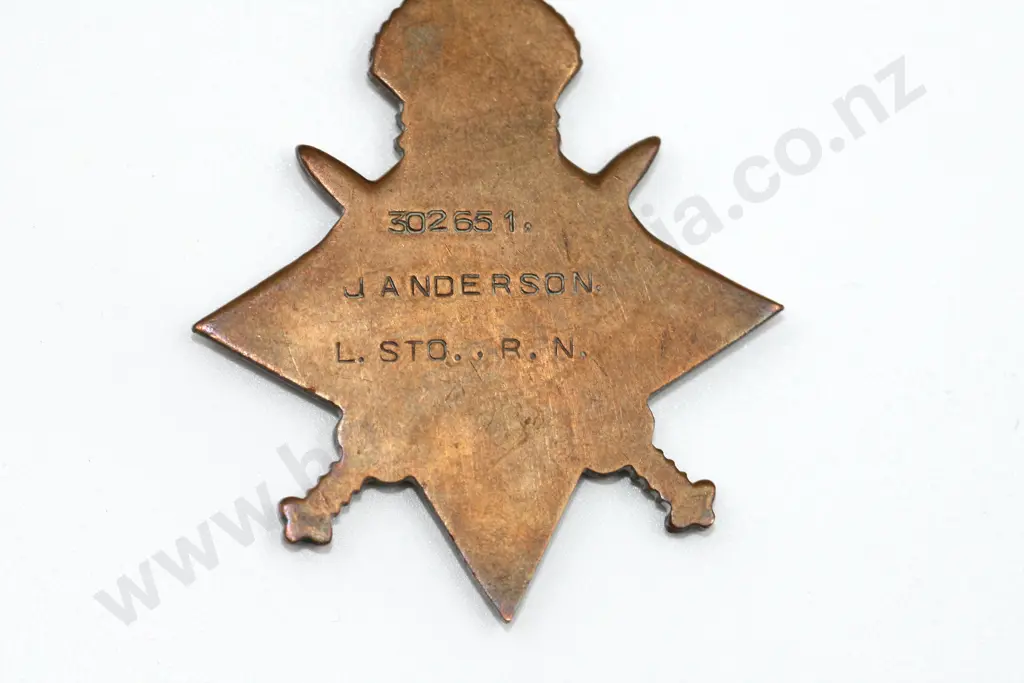Medals & Militaria Saturday, 22 June 2024 / 11:00 am start
Ron Anderson KIA WW2 Group + Fathers J Anderson RN Trio
Lot Details
1914/15 Star trio issued to John Anderson, Royal Navy and the WW2 medals issued to his son, Ronald Anderson, who was lost on operations over Germany in 1940 whilst serving with 75 (NZ) Squadron, Royal Air Force. John Anderson was born in Rothes, Elgin, Scotland on 19th September 1884. He joined the Royal Navy on 15th January 1903 as a stoker, having previously worked as a bricklayer. He served on a number of ships throughout his career. In January 1916 he was posted to HMS Valiant in January 1916 as part of the ship’s commissioning crew. HMS Valiant was one of the five new Queen Elizabeth-class battleships commissioned in the period 1914-16. At the famous Battle of Jutland on 31st May 1916, HMS Valiant served with the 5th Battl Squadron of the Grand Fleet, and fired over 280 shells at the German High Seas Fleet, inflicting damage on SMS Moltke and other ships and suffering no hits in return. Anderson later served on HMS Jason on minesweeping duties. He left the ship on 4 th April 1917, and just three days later HMS Jason struck a mine off northern Scotland and was sunk with the loss of 25 crew. Anderson was promoted to Stoker Petty Officer later in 1917, and was finally invalided out of the Royal Navy in September 1919. Ronald Anderson was born in England on the 13 th December 1913, and accompanied his parents to New Zealand at an early age. He received his secondary education at the Christchurch High School, reaching Senior Free Place standard. Flight Sergeant Anderson applied for and was enlisted in the Service at Hobsonville on the 4th November 1936. He trained at Hobsonville and Wigram as a Wireless Operator and proceeded to the United Kingdom on attachment to the Royal Air Force in January 1938 for further training. On completing this, he was posted in July 1939 to Marham, Norfolk to join the first flight of Wellington aircaft to be flown to New Zealand. On the outbreak of war, these aircraft were made available for service with the Royal Air Force, and formed the nucleus of No. 75 (HZ) Squadron, with which unit he served at Harwell in Berkshire; Stradishall in Suffolk and Feltwell in Norfolk. Flight Sergeant Anderson was a member of the crew of a Wellington bomber aircraft engaged during the night of the 20/21st July 1940 in an attack on a target in enemy territory. The aircraft failed to return to its base and all the crew including Flight Sergeant Anderson were classified as missing. Later information was received from an official German source through the International Red Cross that he had lost his life and was buried in a collective grave in the Cemetery at Weseke, approximately 16 miles North East of Wesel, Germany. After the cessation of hostilities the remains of the crew were re-interred collectively in the Reichswald Forest British Military Cemetery, Germany.

